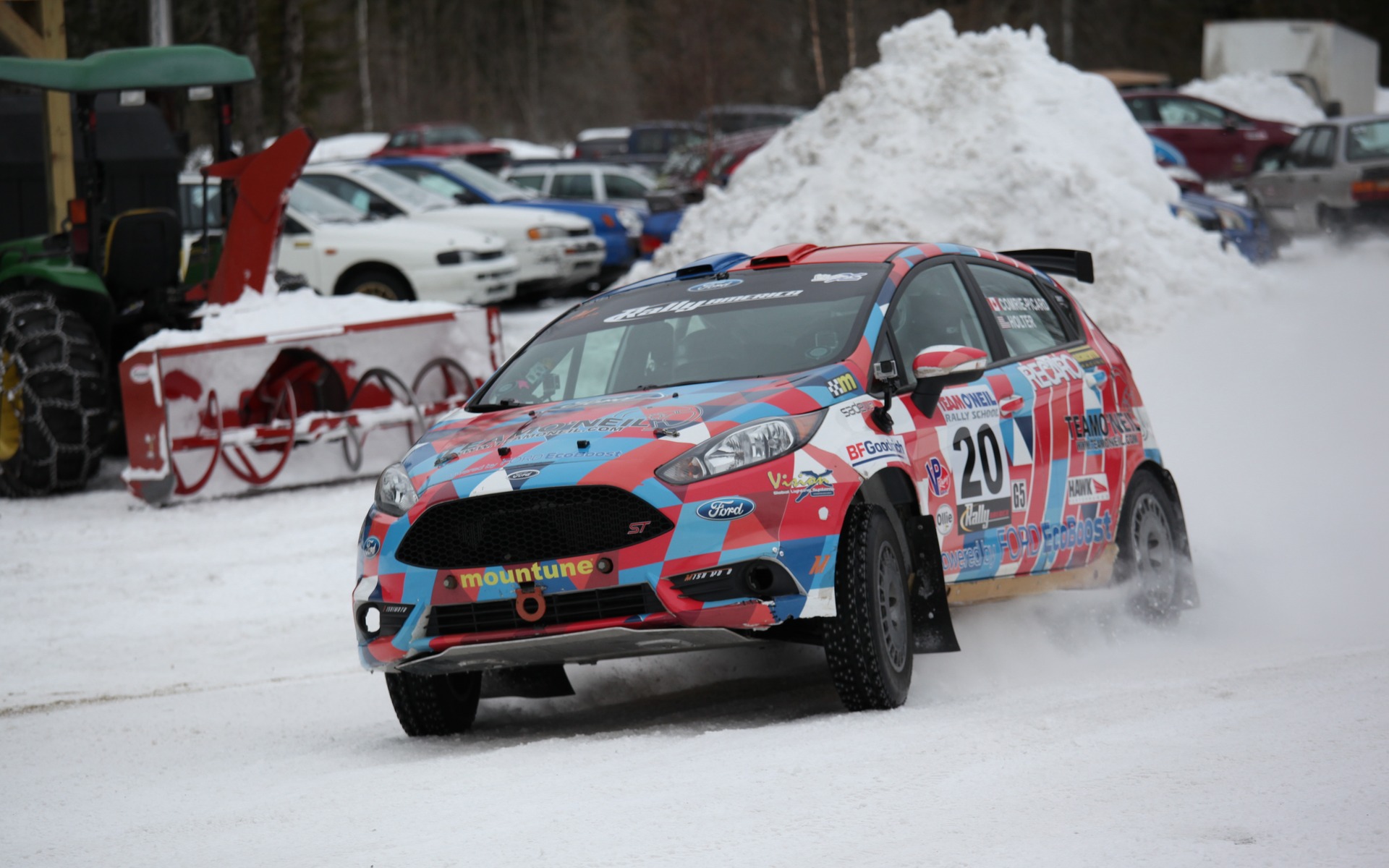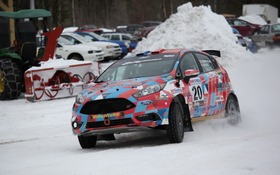Ford Fiesta Rally Experience At The Team O'Neil Rally School
What's the hardest thing you've ever had to do in a car? For me, it was to discard years of accumulated experience driving rear-wheel drive cars on low-traction surfaces and learn how to effectively steer and brake a front-wheel drive Ford Fiesta on the snow and ice. Fortunately, I had the team of professional driving instructors at the Team O'Neil Rally School in Dalton, New Hampshire, to reprogram my feet, eyes, and hands to deal with an entirely different set of physics. Imagine you've been asked to slide the Lunar Rover sideways across the Sea of Tranquility, and you'll get the idea of just how different the front-wheel drive versus rear-wheel drive concept was for me that frigid day in February.
Choose Your Weapon
Ford had brought me to Team O'Neil's 600-acre rally facility due to its sponsorship relationship with owner Tim O'Neil, who has been competing and teaching rally skills for 25 years. O'Neil sets beginners loose on a fleet of Ford Fiestas, nimble yet low-powered cars that allow for the gradual building of confidence through the various winter driving exercises that make up the first day of what is typically a five-day course.
Of course, the Fiesta comes in many flavours, which means in addition to the 1.6-litre, 120 horsepower model wearing Team O'Neil colours, we also had access to a number of Ford Fiesta ST hatchbacks. The Fiesta ST's turbocharged EcoBoost version of the same engine boosts output to 197 horses, but as I was to learn throughout the day, more is not always more - especially when traction is at a premium. Both cars featured a six-speed manual transmission and had their ABS, traction control, and stability control programs completely disabled. After all, we were there to learn car control, not to have the electronic Hand of God keep us out of trouble.
Class Is In Session
Before you're let loose to slide with wild abandon and kill pylons on an otherwise peaceful snowscape, Team O'Neil sits you down in a classroom and explains the basics of cornering, acceleration, and braking in terms anyone could understand. Given that we were to be exclusively driving front-wheel drive Fiestas, instruction was tailored to the details of weight transfer, momentum management, and late/early apex cornering for that specific platform.
It boils down to this: when turning a corner, you want as much weight on the front wheels as possible, because those two tires are responsible for getting you around the corner. Unlike a rear-wheel drive or all-wheel drive car, however, in a front-wheel drive Fiesta they are also charged with accelerating you out of the corner once you've completed your turn. That last sentence contains a very key concept for front-wheel drive performance, and that's 'after you've completed your turn.' Team O'Neil stressed that we could ask the front wheels of the Fiesta to turn, or to accelerate, but not both at the same time.
Enter The Left Foot
How, then, to effectively manage a corner, especially one that consists of pure ice covered by a thin layer of snow? The answer rests in your left foot, or specifically, the intersection of your left foot with the brake pedal. Unlike street driving, where you use the right foot for both braking and accelerating (and leave clutch duties to the left), in a rally driving situation you cover the brake with your left foot at all times.
The reason for this is deceptively simple, but fiendishly difficult to execute in the real world. When you brake a car, the laws of physics transfer the vehicle's weight forward, which positions it over the front wheels. The more weight there is up front, the more effectively you can steer a car. In slippery conditions the effect of the weight transfer becomes even more important, because turning the steering wheel too much simply transforms your front tires into snowplows digging a trench that locks you into a relatively straight path.
The secret to effective performance driving in the snow with a front-wheel drive car like the Ford Fiesta is to angle the wheel slightly to initiate the turn, then gradually apply greater and greater brake pressure with your left foot, all while staying on the gas to keep engine revs steady. You don't want to stop, you want to turn, and using the brakes in conjunction with the gas magnifies the 10 to 15 degree steering angle without causing the car to plow. It also helps to induce a degree of oversteer, which pivots the car around its front axle.
Your Gateway To Car Control
It all sounds so simple, but I found it incredibly hard to apply this technique without a lot of practice. For example, in a rear-wheel drive car you can use the throttle to steer the vehicle on snow and trigger an oversteer situation, but in a front-wheel drive Fiesta you can only apply the throttle after the turn has been made or you'll simply increase your 'rate of plow.' Gradually, after hours of practice on uphill and downhill slaloms the instructors at Team O'Neil had me comfortable enough with the idea of left-foot braking to begin to use it in combination with other manoeuvres, such as the Scandinavian Flick, where the car's momentum is moved from one side to the other, quickly, so as to slide through a sharp corner without losing speed.
Whither The Fiesta ST?
Oh yeah - remember when I said earlier that more power didn't always equal more fun? The Ford Fiesta ST's turbocharged engine is great when you've got enough grip to make the most of it, but when you're spinning your wheels in the snow the twitchiness of its throttle (which felt hyper-responsive compared to the base Fiesta) and the stiffness of its suspension work against you. At least if you're a front-wheel drive rally beginner, like I am.
It's nice to know, however, that on the modern automotive landscape, which is deeply entrenched in a horsepower war the likes of which has never before been seen, there are still some situations where David beats Goliath. That the meek Fiesta was able to trounce the mighty Fiesta ST within the slippery confines of the Team O'Neil rally school was a reminder that sometimes, it really is the motion in the ocean that counts. Sometimes.












